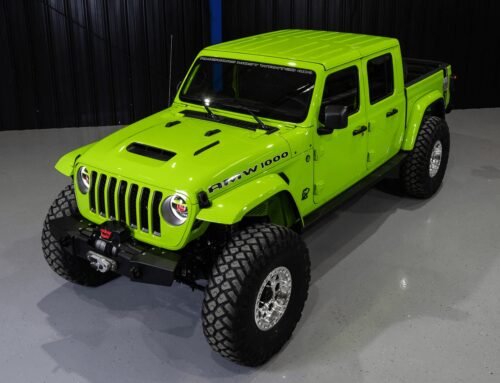The first customer engine for the Bentley Bacalar has been built.
Since it was unveiled at last year’s online-only Geneva show, the $1.9 million Bentley Bacalar has been enduring exhaustive testing to make sure it meets high customer standards. Designed by Bentley’s Mulliner coachbuilding division, the Bacalar is a bespoke version of the Continental GT Convertible with striking styling that looks unlike any other model in the automaker’s lineup. Last December, Bentley built the first pre-production prototype of the Bacalar, and now the W12 engine for the first customer car has been built and thoroughly tested.
Powering the Bacalar is an enhanced version of Bentley’s 6.0-liter W12 engine uprated to 650 horsepower and 667 lb-ft of torque, an increase of 24 hp and 3 lb-ft over the W12-powered Continental GT Convertible. Each W12 engine takes 6.5 hours to build by a team of 45 craftspeople before being quality-control tested for over an hour using three diagnostic machines.
 Bentley
Bentley
 Bentley
Bentley
 Bentley
Bentley
 Bentley
Bentley
First, the engine is tested for leakage, which can be undertaken after it has been assembled to the point that fuel, water, and oil systems can be closed. This production stage is known as a “short engine.”
For the leakage test, each of the systems for fuel, oil, and water are pressured individually and then measured as the pressure decays over time. If the pressure drops faster than expected, a leak is detected. A fluid is then sprayed onto the engine’s exterior to pin-point any leakage paths. The second “Cold Test” is more advanced. Here, the engine is loaded onto a testbed plate and connected to a large electric motor via the crankshaft. Using sensors, data is then collected from measuring 600 individual properties and characteristics of the engine during a 15-minute cycle.
 Bentley
Bentley
 Bentley
Bentley
 Bentley
Bentley
 Bentley
Bentley
During this test, the engine is run at 120 rpm to make it easier to identify inconsistencies. The Cold Test also helps Bentley confirm if the engine timing is accurate. Finally, the “Hot Test” simulates real-world usage of the engine with every part installed. Before this test, UV dye is added to the engine to help identify any leaks and the coolant and fuel system are pressurized with air and nitrogen respectively. The engine is then cranked to build oil pressure before the ignition is activated and left to idle for technicians to listen for any issues and check for leaks with a UV lamp. Each W12 is then tested for a minimum of 21 and a half minutes and runs up to 3,800 rpm with a maximum load of 221 lb-ft.
 Bentley
Bentley
 Bentley
Bentley
 Bentley
Bentley
 Bentley
Bentley





